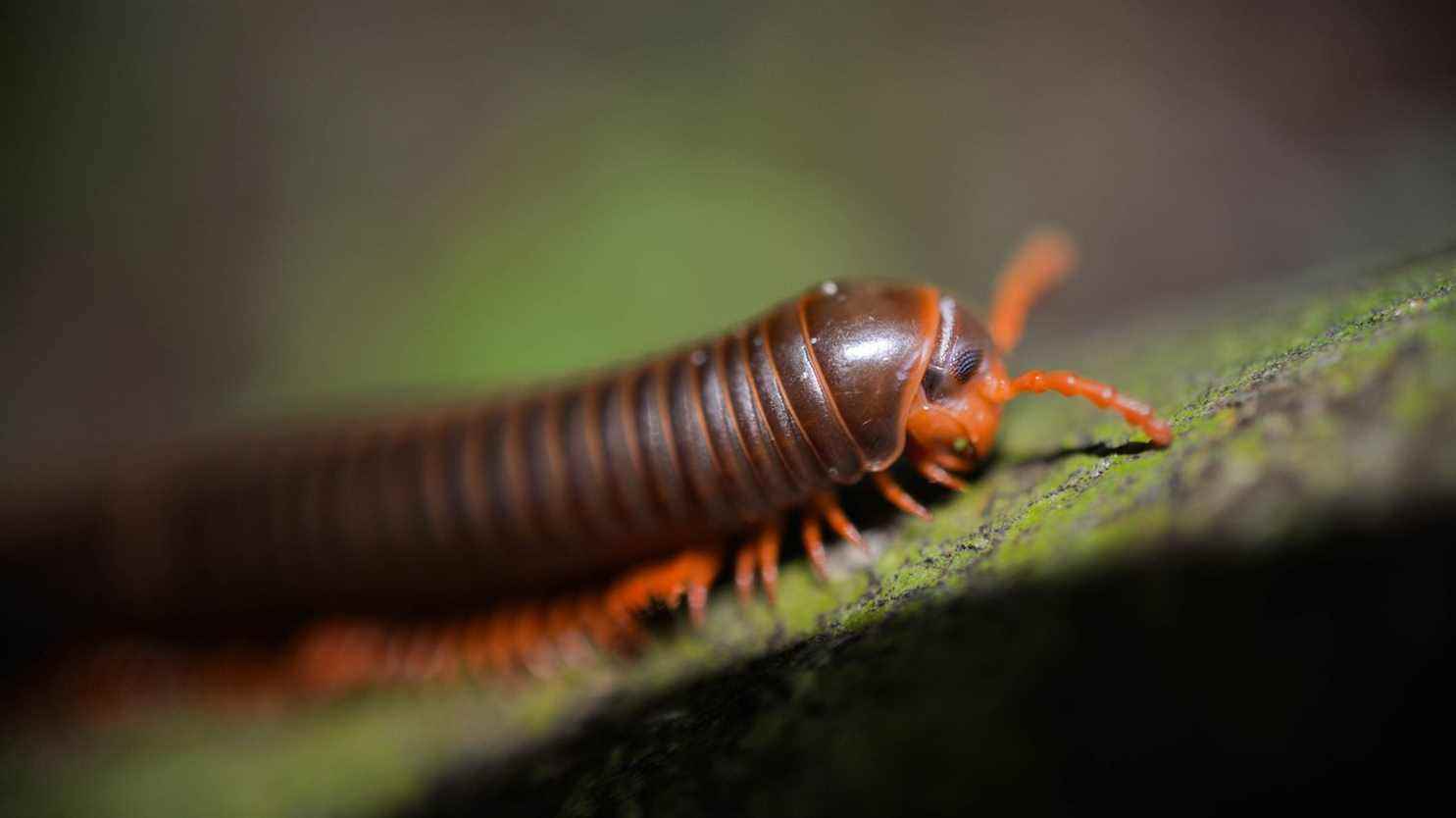It has more legs than any other living thing. Dwith 1,306 guibolles, the first “true” centipede in the world has been discovered, reports a study published Thursday, December 16 in the journal Scientific Report. If lhe myriapods, worm-like creatures with segmented bodies, are commonly referred to as “centipedes”, none so far had been found possessing more than 750. The species, named after Eumillipes Persephone, in reference to the Greek goddess of the underworld, was discovered 60 meters underground, in a borehole in a mining area in Western Australia.
The animal, pictured here, looks like a string barely a millimeter wide, but is almost 10 centimeters long. He has “a cone-shaped head with huge antennae and a beak for feeding”, specifies the study. Eyeless, it is also colorless, characteristic features of animals living underground.
“This centipede digs by stretching its stretchy body, making it thinner to adapt to micro-cavities”, details Paul Marek, from Virginia Tech University (United States). Its multiple legs propel its body and allow it to open cracks and crevices in the earth to navigate it as it pleases.
“It’s a remarkable critter!” reacted the entomologist André Nel, of the Institute of Systematics, Evolution, Biodiversity (CNRS / National Museum of Natural History), who was not involved in the study. In his eyes, this discovery is a hope for biodiversity, since the centipede “has recolonized artificial cavities, which is quite encouraging”. These micro-cavities, largely unknown, constitute a breeding ground for new species to be discovered, according to him.
Centipedes were among the first air-breathing animals on Earth, the study notes. They play a vital role in the ecosystems they inhabit, eating litter and recycling nutrients. Their babies hatch with only four legs, but may continue to develop new segments, with new legs, into adulthood.
